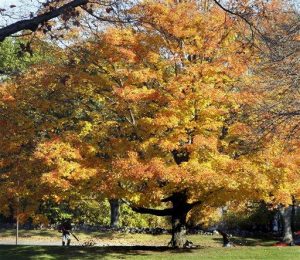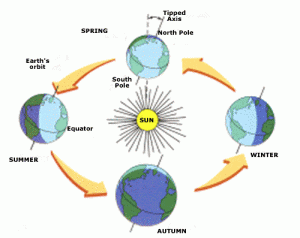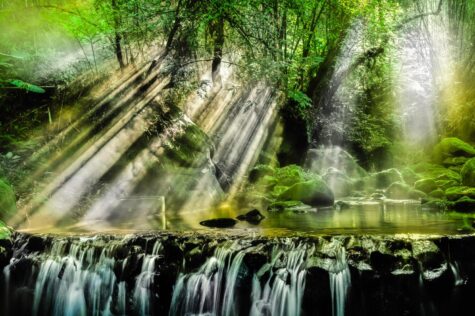The Science Behind Fall
November 15, 2016
Cool air, trick-or-treaters, less daylight, pumpkin spice lattes, and leaves changing color.
These are all characteristics associated with fall season. Aside from the sweets, why do these changes in weather occur? Why does the air get cooler? Why is there less daylight? Why do leaves change color? All of these have to do with the science behind fall.
Color changes in leaves

The breathtaking color changes of leaves in the fall is known for being a great aspect to photographs. While appealing to the eye, what is actually happening to the leaves themselves?
According to the College of Environmental Science and Forestry, leaves have cells that contain a chemical known as chlorophyll that gives the leaf its green color. Chlorophyll absorbs sunlight as an energy source for the plant. This helps turn carbon dioxide into carbohydrates and sugars, allowing the leaf and plant itself to remain healthy.
Because the green color of the leaves is so overwhelming, other pigments of yellow and orange are hidden. When the cool fall weather kicks in, there is less sunlight obtained by the leaves, so the plant stops making sugar. This breaks down the chlorophyll, thus the green fades, revealing the overlooked pigments.
“All these colors are due to the mixing of varying amounts of the chlorophyll residue and other pigments in the leaf during the fall season,” said the College of ESF. This process creates the beautiful colors of fall.
Leaves falling
As a kid, waiting for parents to create massive piles of leaves to run and jump into was just as important as the trick-or-treating. But why are there even leaves to rake up in the fall?
According to the College of ESF, “…where the stem of the leaf is attached to the tree, a special layer of cells develops and gradually severs the tissues that support the leaf.” After this, the plant seals up the cut and the leaf detaches.
Daylight and temperature
While it gets brighter earlier in the morning and darker earlier at night, it seems strange to change our clocks. It also throws everyone off balance for about a week. Also, the air gets cool and crisp, prompting the annual “sweater weather.” But why does it get cold in the fall? And why do we change our clocks?
The original purpose of daylight saving time was to make better use of sunlight and conserve energy giving an extra hour of light in the morning.
As for the reason why it gets cold in the fall, it all has to do with the tilt of the Earth. NASA explains that the orbit of the Earth is slightly lopsided and is closer to the sun during some parts of the year. While some might think that this is when summer occurs, it’s actually the opposite. The Northern Hemisphere has winter when the Earth is closest to the sun. Along with its tilt, the Earth’s axis is also on an imaginary pole. Because the axis isn’t straight, it causes us to have seasons.

According to Leaner.org, “During the spring and fall, the Earth leans neither toward nor away from the sun; daylight and nighttime hours are more equal and temperatures are moderate.” Adjusting daylight saving time to this allows more light in the morning. When we “fall back” the clocks in fall, we are returning to the original time that we “spring forward” to in the previous March.
“During the winter, the sun’s rays hit the Earth at a shallow angle. These rays are more spread out, which minimizes the amount of energy that hits any given spot. Also, the long nights and short days prevent the Earth from warming up” according to the Library of Congress. Because the fall is right before winter, this process begins and it becomes cold in the fall.


